Get Out of Dodge: 55 Survival Items for Your GOOD Bag
Posted by admin on
A Get-out-of-Dodge bag, or GOOD bag, can be thought of as cousin to the common bug-out bag.
But where the BOB is intended to help sustain you until you can move to a place of safety and security in the aftermath of an SHTF event, a GOOD bag is one you choose when you are hitting the trail and know from the outset you might not be coming back!
Accordingly, the priorities for GOOD bag packing are slightly different from a BOB or other types of survival kit. A GOOD bag will need to sustain you for an indefinite period of time as you deal with an evolving, shifting survival situation.
There are all sorts of reasons you might need to abandon your current location and head out into the wilderness.
The most common one is that something has gone down in your neck of the woods that makes staying put untenable – a natural disaster, social unrest, or an invasion by zombies (or worse).
But even if things are relatively stable where you live, there’s always the chance that something could happen that forces you to leave in a hurry: your home catches on fire, for example.
You may be on the run from someone or something. Or you may have decided it’s time to “bug-out” when things start looking dicey for some other reason.
In any case, if you’re going to hit the road, you’ll want to have a GOOD bag packed with everything you need to make the journey as safe and comfortable as possible. So let’s take a look at the key items you’ll want to include.
Shelter and Sleeping Gear
Your first order of business is to make sure you have some way to get out of the elements. This means a sturdy shelter, preferably something more than just a tarp, as well as sleeping gear that will keep you warm and comfortable.
A good rule of thumb is to pack one set of shelter/sleeping gear for every person in your party, save the tent if it sleeps multiple.
So, if you’re traveling solo, bring along a tent, a ground pad, and a winter-rated sleeping bag rated for temperatures below freezing. If you’re with someone else, share the load by splitting up the gear between you.
Tent or Bivy
A tent, if you’re traveling with multiple people, or a bivy sack, if you want to stay lightweight and solo, is your first line of defense against exposure, and should protect you against rain, wind and other hostile elements.
It is easy to get too bulky and too cumbersome, so try to strike a balance between protection and portability.
Again, if you are traveling with someone you can split the tent components between multiple members of the party to reduce the burden.
Sleeping Bag
A quality sleeping bag is invaluable anytime you are outside for an extended period. A good one can keep you warm inside your tent even in the most frigid environments.
Usually large and bulky, even if they don’t weigh very much, this will be strapped to the outside of your bag.
Resist the temptation to delete this item just because you’re in a temperate or warm climate. Night time temperatures and stiff breezes can still induce hypothermia!
Blanket
A good, snugly blanket will always help keep you warm, and sometimes serves as an intermediary item when you are still sitting around a fire or don’t need to scooch down inside your sleeping bag.
A properly designed field or camping blanket will be compact, lightweight and still quite warm. You might consider a traditional woolen Army style blanket since they can keep you warm even if they get soaking wet.
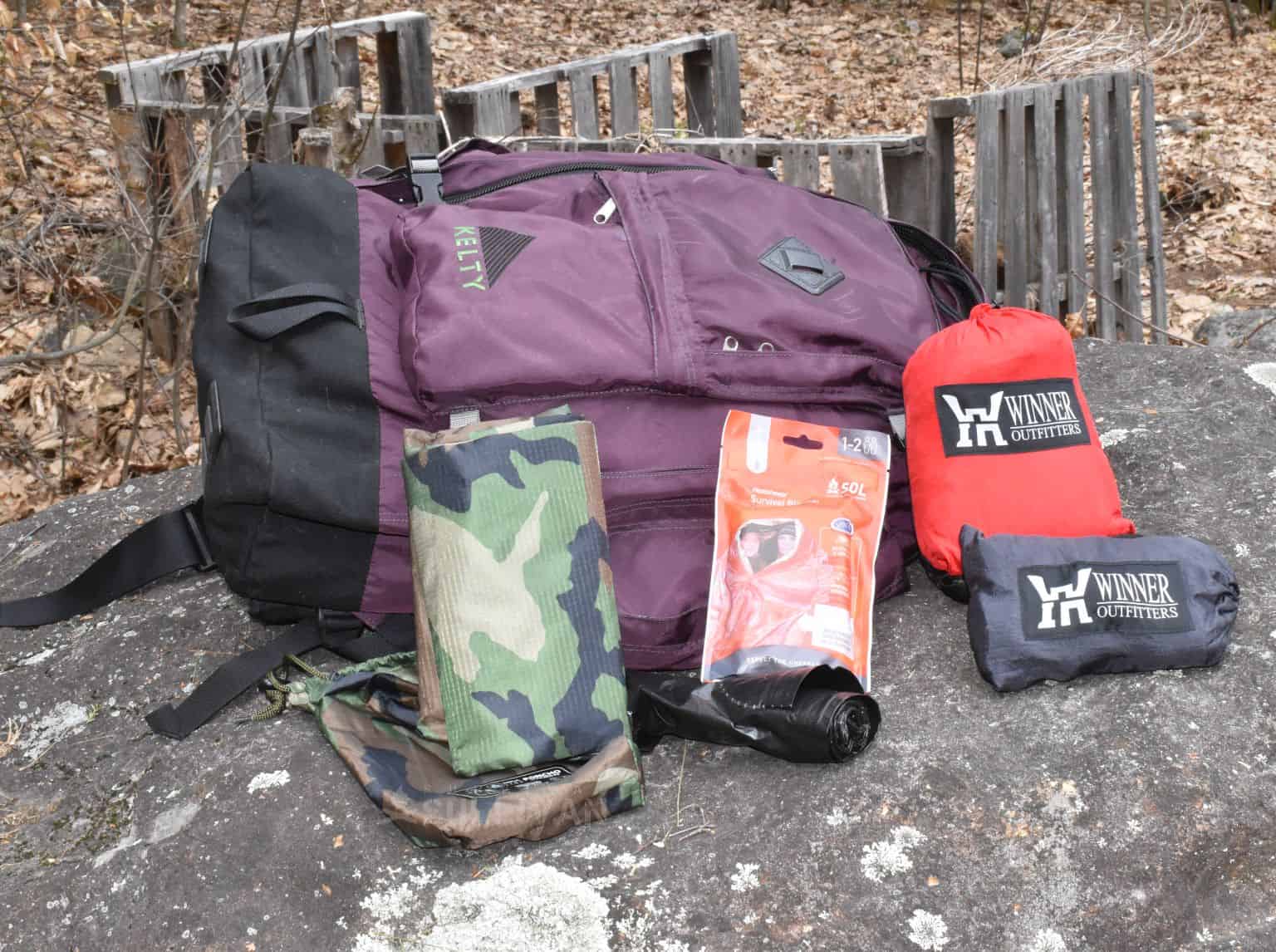
Space Blanket
Space blankets are listed distinctly from traditional camping blankets because they differ so radically in design. Looking basically like a humongous sheet of silver or gold foil, these work by reflecting infrared radiation emitted by your body back onto your body.
Ultra-lightweight and ultra-compact, these are a great backup option and can also be used as a reflector for your campfire.
Tarp
A sturdy multi-purpose tarp is an excellent inclusion for your GOOD bag. A tarp can serve as a ground cover, a windbreak, an improvised tent or bivy, and much more.
Any tarp that you choose should be lightweight, strong and feature multiple reinforced grommets around the perimeter to help you hang it or place it as required. It works especially well with the zip ties, described elsewhere on this list.
Ground pad
A ground pad is another survival shelter essential that is commonly omitted by beginners. Out in the wilderness, the ground basically serves as a giant heat sink, pulling warmth out of your body at a frightening rate.
Any insulating material that you can put between your body and the ground will help you keep more of the warmth that you generate with blankets, sleeping bags and tent. Also helps a bundle when the ground is covered with rocks, pebbles, roots and the like.
Bug netting
In most parts of the world far from civilization you’ll find insects in ferocious quantity and a significant portion of them would love nothing more than to drink your blood or sting you out of spite.
Although rarely life-threatening, it is enough to drive someone to madness, so you can rest more meaningfully by utilizing bug netting to keep these nasty critters at bay.
Bug spray
Listed here for convenience, bug spray works in conjunction with bug netting to keep your flesh unpunctured by hostile insects and arthropods.
Get a good brand that contains a high concentration of active ingredient, as the stuff that you use at a backyard cookout in the summertime is probably not up to the task of repelling the beasties in the deep country.

Food and Water
You can’t survive for long without food and water, so these are two of your most important items.
When packing food, think about both the amount you’ll need to sustain yourself and the variety you’ll require to stay healthy and happy under the circumstances.
High-calorie foods that don’t require cooking or only minimal prep are best. As for water, you’ll want at least one liter per person per day, but more is always better to a point; water is quite heavy, so plan on resupplying from natural sources.
Remember to pack a way to purify water as well, whether it’s chemical tablets, a filter, or just boiling water over a fire.
Food Rations
Any food that you pack should be simple, ready to eat or easy to prepare, shelf stable and highly calorie dense.
Though it is possible to procure food from natural environments, this requires a considerable amount of skill, know-how and usually time.
Pack larger, more filling meal options and a variety of portable snacks that can be eaten on the go. Canned tuna or chicken, hearty stews and noodles, trail mix, jerky, and similar items are your go-tos.
Mug
A large, metal mug can be used for cooking and drinking and is the perfect multipurpose item for inclusion in a GOOD bag dining kit. Everybody has their preference as to what is best, but I like one that will nest around my water bottle or canteen to save space.
Utensils
Durable, simple reusable utensils are the order of the day for your cutlery kit. You might consider a knife, fork, spoon arrangement or go with the classic camping utensil, the spork.
Whatever you choose, make sure they are easy to care for, durable and compact.
Water Bottle
A water bottle is an essential inclusion in your kit, as it will keep at hand water that you bring with you and water that you source while in the field.
Once again, everybody has a preference, from modern and seemingly bomb-proof Nalgene plastic bottles to old school metal canteens that one would typically see in the military. Both are viable, but keep in mind that you cannot heat liquids in a plastic container over a fire!
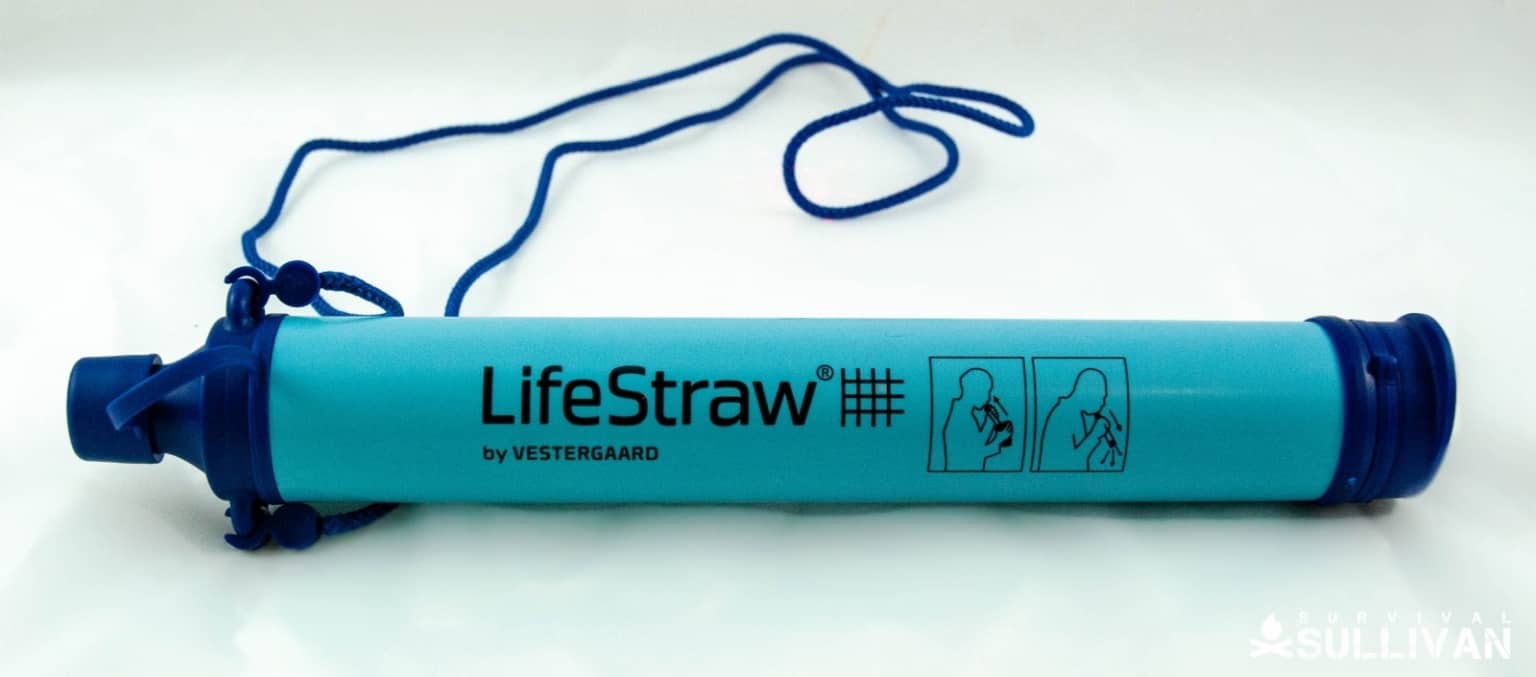
Water Filter
This is another mandatory inclusion in your kit.
Even natural water that you source from the most pristine looking, inviting and crystal clear stream will be chock-full of various bacteria and other microorganisms that can make you horrendously sick, to say nothing of nasty dissolved solids you don’t want to ingest.
A portable water filter weighs very little but can remove the vast majority of contaminants from such water sources, making it much safer to drink.
Purification Tablets
You definitely want a backup option when it comes to water purification capability, and purification tablets, or liquid if you prefer, can also zap those nasty microorganisms that we are so worried about though it won’t do anything for improving the quality of the water when it comes to dissolved solids.
Unfortunately, it also routinely changes the taste of the water and not for the better, but at least it will be much safer to drink! It is too light and too convenient to go without.
Instant Coffee / Tea
Most of us in the west are caffeine addicts even if we won’t admit it, and even if you don’t crave you’re fixed regularly throughout the day caffeine is one of the best energy supplements and mental sharpeners that we have available.
You will likely have calls for a boost at some point during your evacuation operation, so include instant coffee or tea bags according to your preference.
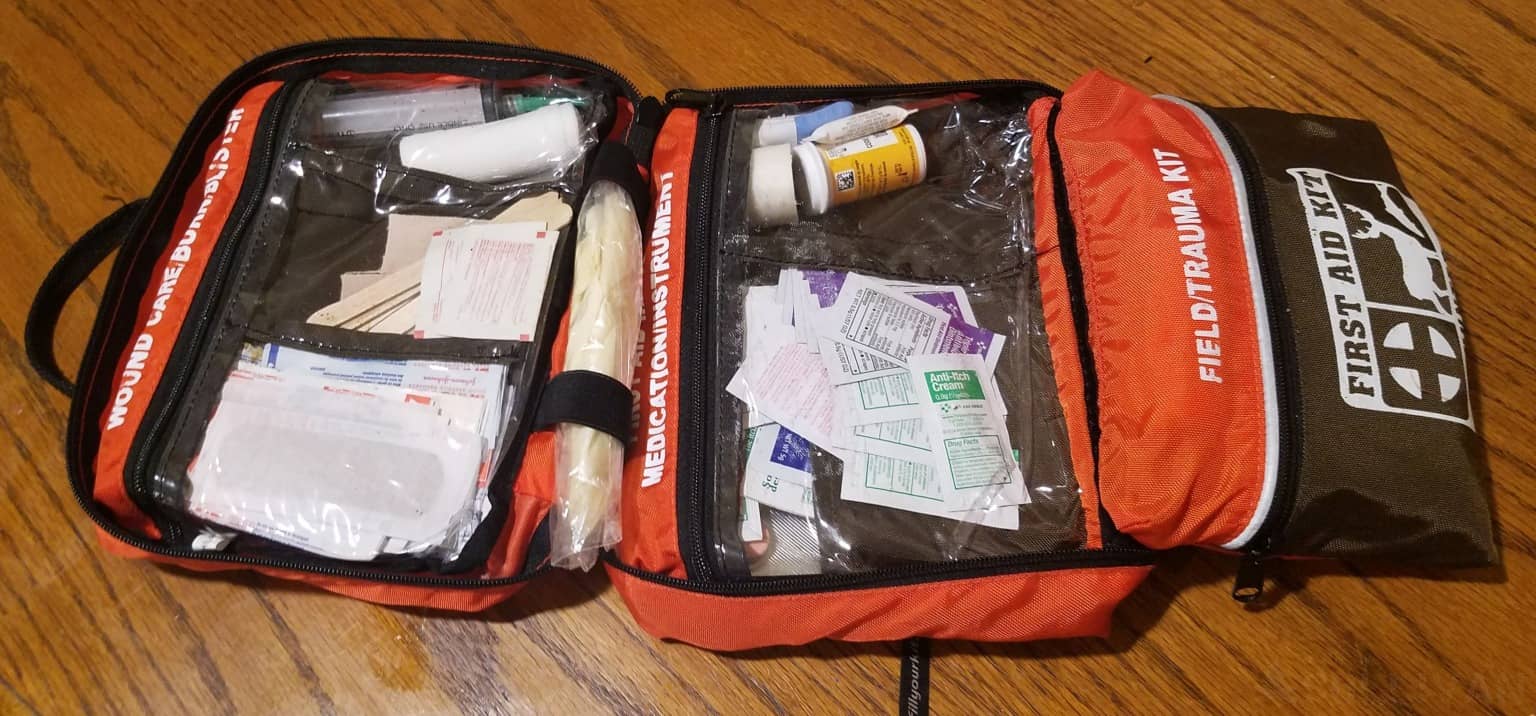
First-Aid Kit
You never know when you might take a spill or get injured while traveling – especially in rough terrain. So make sure you have a good first aid kit packed with supplies to deal with a range of injuries.
Band-aids
Not every injury will require a major intervention, but you don’t want to ignore tiny scrapes, cuts and sticks, either.
The risk of infection in the field is too great to put off treatment, and for these smaller injuries Band-Aids remain the perfect solution.
Gauze, pad and rolls
For larger injuries, or minor injuries that cover a wider area on your body, gauze, both pad and roll varieties, is just the ticket. Inexpensive, easy to use and effective, this is a staple in every medical kit.
Tape
You’ll need first aid tape or athletic wrap to hold bandages in place. Is also handy for devising improvised splints and other necessities. Get a big roll or two and pack it flat in your first aid kit to save room.
Nitrile Gloves
You might be heading off on a rough and ready survival adventure, but that still doesn’t give you any excuse for forgoing proper medical protocol when it comes to First aid.
Nitrile gloves will do two things, keep blood and other bodily fluids, particularly those of other people, off of your hands and keep germs present on your hands out of wounds. Keep several sets in your kit, and then ditch them after you use them.
OTC Meds
A variety of over-the-counter medications for dealing with pain, nausea, diarrhea and other common maladies should be a fundamental inclusion in your first aid kit.
You can break down larger bottles into smaller containers so long as you label them appropriately, or rely on individually packaged doses to save even more room.
Antibiotics
A commonly omitted inclusion in a properly equipped first aid kit, antibiotics can save the day if an illness gets out of control or a wound should become infected. Either can quickly turn into an incapacitating event if you are unable to treat them.
Potent, wide spectrum antibiotics are generally your best bet, but you’ll need to procure them from a sympathetic doctor who can write you a prescription for this specific purpose, or acquire them through the gray market.
Fire-Starting Kit
If you’re going to be cooking food or keeping warm at night, you’ll need a method to start fires if you don’t have one already. This means having some sort of fire starter, such as waterproof matches, a lighter, or even a flint and steel set.
Lighter
Other, fancy or traditional fire-starting tools might be the talk of the prepping town, but you will rarely beat a modern lighter when you need to get a fire going quickly and easily in most conditions. I always keep a couple of full Bic lighters in my kit for the purpose.
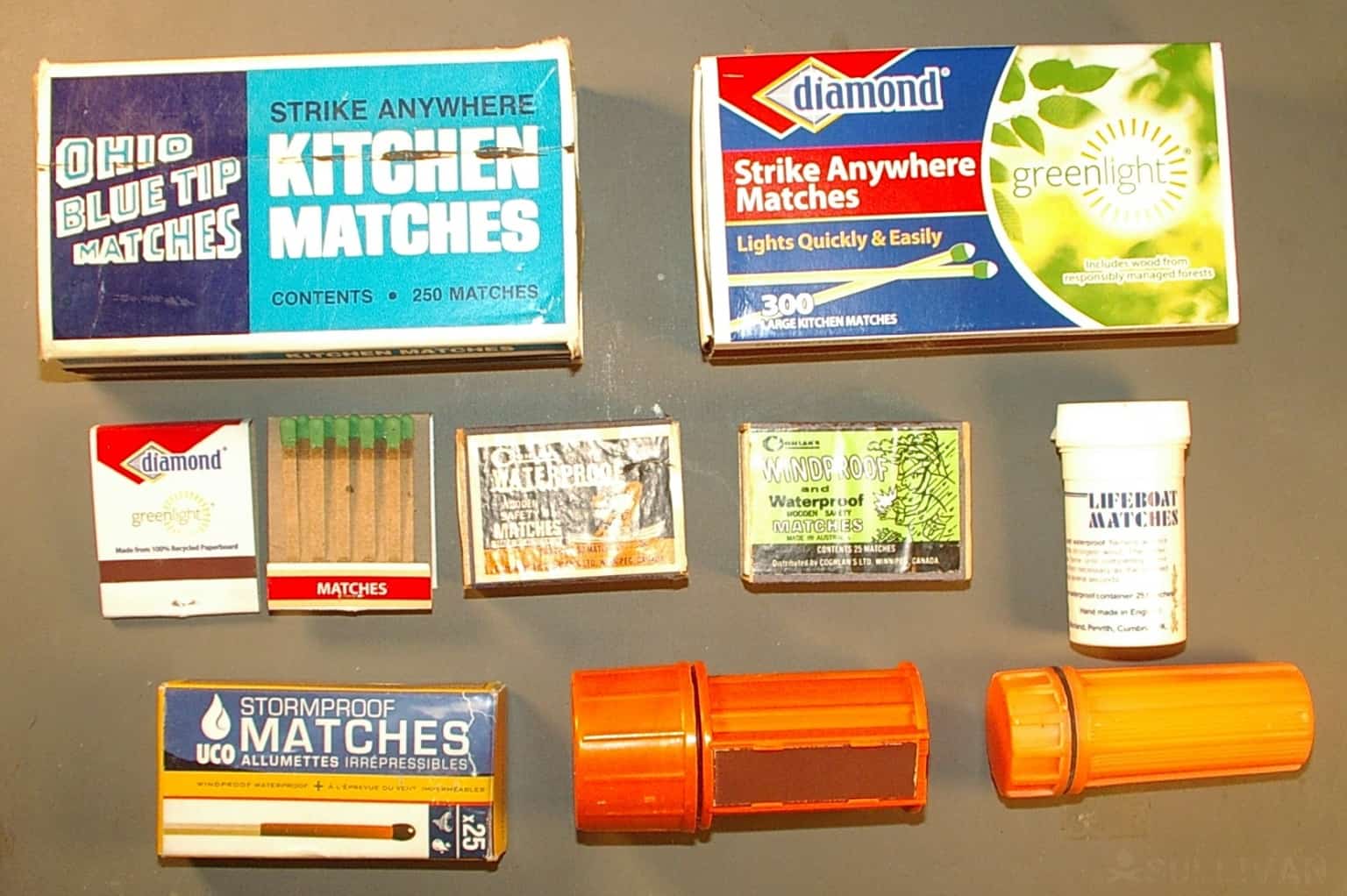
Storm Matches
Fire starting is one element of preparedness where redundancy is king. Aside from my lighters, I like high quality storm or survival matches.
These matches can strike anywhere and are completely weatherproof, capable of burning underwater even! That is amazing capability that can stand up to the worst Mother Nature has to throw at you.
Ferro rod / Flint and steel
For the ultimate and simple, reliable and certain Fire starting capability a ferro rod or traditional flint and steel can produce a blast of hot, incendiary sparks after just a little bit of practice using it. This is more than capable of igniting a fire even in rough conditions.
Tinder
I’m not talking about the dating app. Swipe left, y’all. I am talking about your initial stage of fuel that is used to ignite the kindling for your campfire.
More so than larger fuel, good tinder is often in short supply out in the wilderness and considering how small it can be it’s worth bringing some with you in the form of dryer lint, Vaseline soaked cotton balls or off the shelf fire starter tinder.
Tools and Supplies
You’ll want to bring some essential tools and supplies with you in order to make your trip more convenient and safe while accomplishing essential survival tasks with greater ease and efficiency.
To make your journey easier, you’ll want to pack a knife, multi-tool, compass, map, headlamp, and flashlight among other things. It’s best if they’re compact so that they fit into the supplementary pouches of your GOOD bag for quick access.
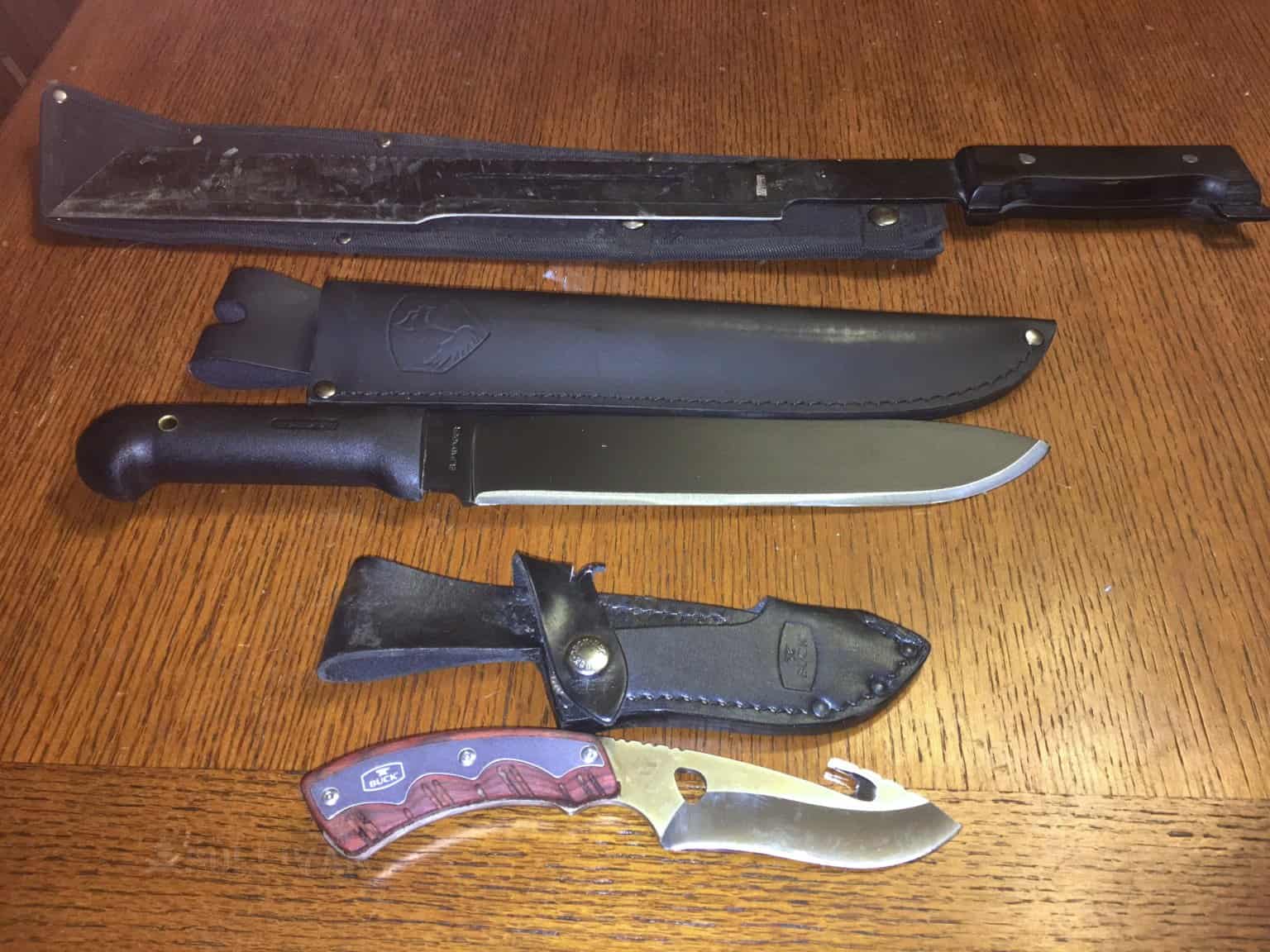
Knife
Probably the most quintessential tool that any prepper will ever own. with the right skills and a good knife you can master pretty much every environment on earth, and create most of what you need be it tools, shelter or weapons.
A fixed blade knife is definitely king when it comes to hardcore field usage, but you can still make a good case for a high quality, strong folding knife.
Multi-tool
This gadget can replace an entire toolbox’s worth of tools for light duty tasks. For interim chores or repairing other gadgets and gear, you’ll be glad you have a capable multi-tool.
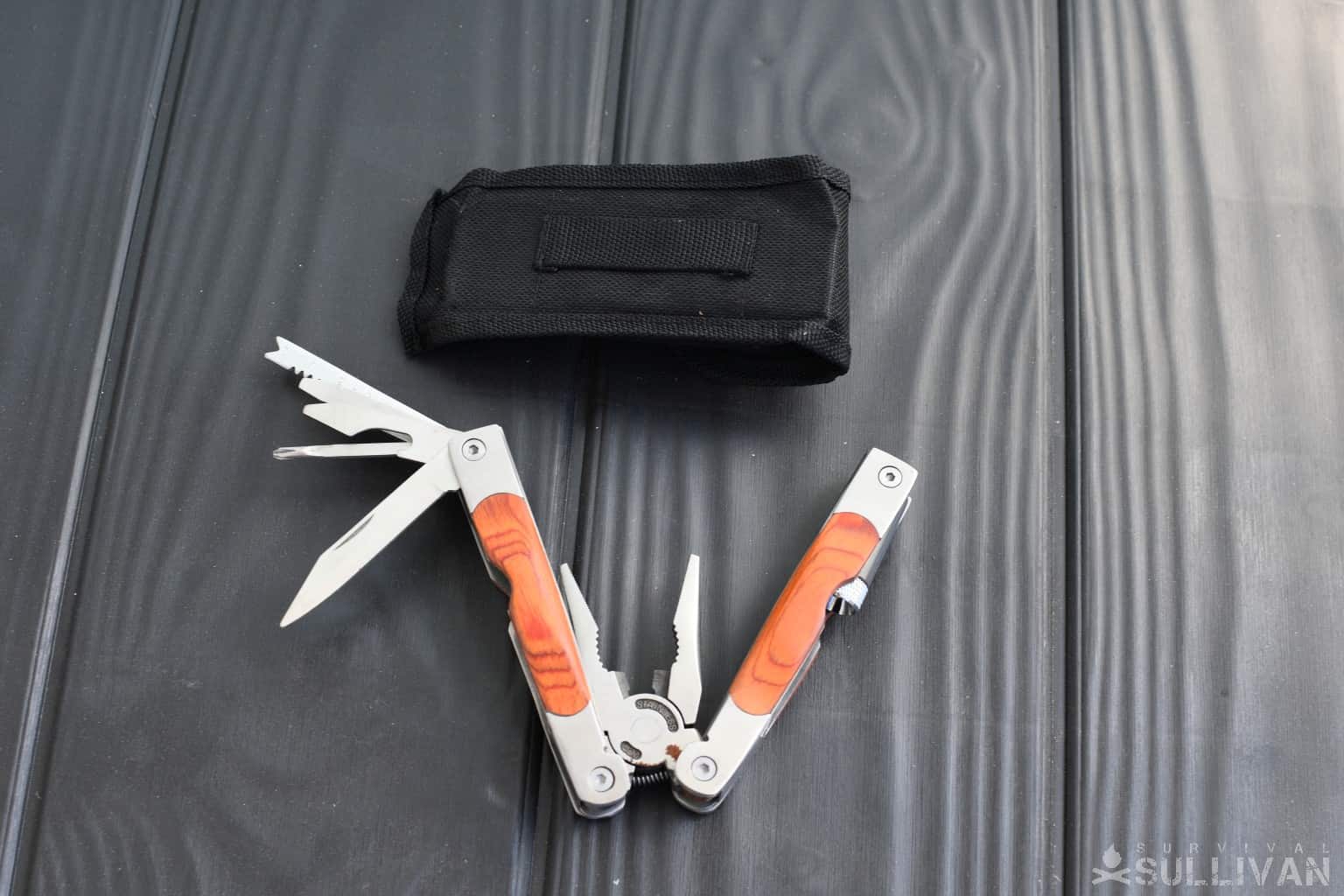
Folding saw
In most survival scenarios where you have wood to make use of for construction or as fuel for a fire, you’ll need to process it.
An ax or hatchet is usually the right tool for the job, but they tend towards being larger, heavier and can be quite dangerous, especially when you are already tired or injured.
A folding saw can perform many of the same tasks with just a little bit of extra energy, and do it much safer.
Flashlight / Headlamp
The darkness holds many dangers for the unwary, and far from the lights of civilization or after the lights of civilization have gone out you’ll need to make your own and that’s why you need a flashlight and a headlamp.
Headlamps are especially good for navigation and task lighting since they allow you to keep your hands free.
Batteries
Your electronic gadgets and particularly your flashlight and headlamp mentioned above are only good for as long as their batteries last.
Make sure you carry several spare sets for any mission critical gadgetry. Note that if you rely on rechargeable devices you should carry a portable solar charger instead of spare batteries.
Survival Radio
A survival radio or emergency weather radio will allow you to tune in to broadcasts from government agencies concerning the event, crisis and changing circumstances regarding aid, rescue and other important information.
A good version of this device will have a built-in hand operated crank for functionally limitless power while in the field and might include additional things like charging ports and a flashlight or SOS blinker.
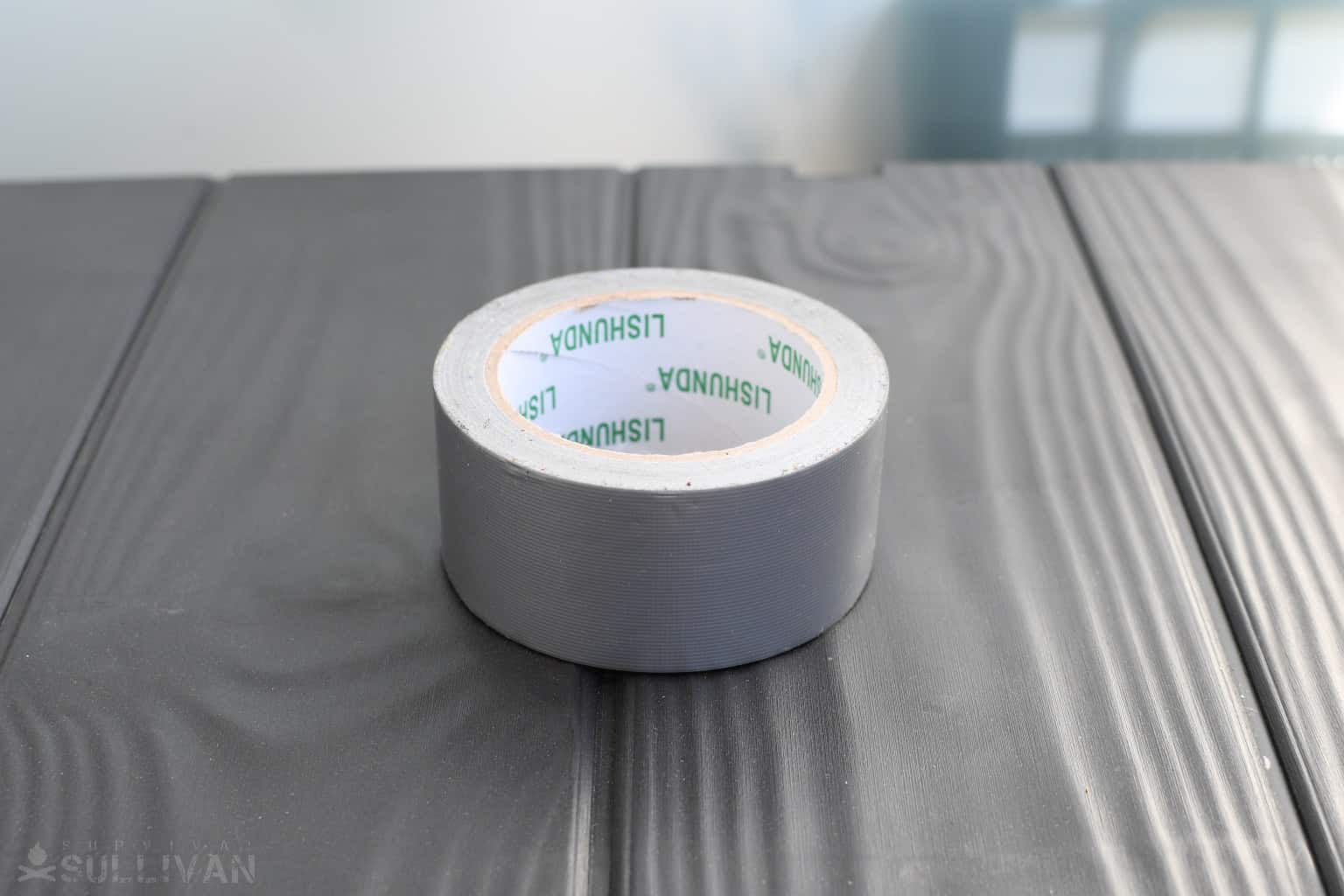
Duct Tape
Duct tape is every prepper’s and DIY enthusiast’s best friend. It is incredibly useful for field improvised construction, repairs and even certain medical tasks. Chances are if you can’t fix it at the instant with duct tape you probably aren’t going to fix it at all.
You can save space in your pack by unrolling and then rewinding your duct tape around another circular object or by flattening the roll so it can pack flat.
Survival Whistle
A survival whistle is a wonderful utilitarian, multipurpose signaling tool. It can allow you to send messages over a distance or indicate your presence, and the ear splitting blast of one of these whistles can be heard for miles.
Don’t leave home without it and make sure you keep it on your body so you’ll have it even if you are separated from your pack!
Signal Mirror
A great companion item to the survival whistle, a signal mirror allows you to use visual instead of auditory means for long distance signaling.
Most commonly used to flash your presence at passing or loitering aircraft, it can also be used anywhere you have line of sight and access to the direct rays of the sun.
Binoculars / Pocket Scope
If you can see better, farther, you can make better decisions about what you are walking into, literally.
This could be looking for danger, looking for help or looking for someone that you have lost. It is hard to overestimate how helpful telescopic optics are when in the field. Whether you prefer binos or a monocular, get a good one that is compact and durable.
Compass
The compass is an ancient but no less effective navigational tool that is still ubiquitous today.
Knowing with certainty what direction you are heading in will greatly inform your navigational choices, and might make all the difference between heading towards safety or away from danger, and blundering into harm.
Using a compass properly does take some skill, so make sure you get those skills and practice them.
Maps
No GOOD bag is complete without a variety of maps. In conjunction with a compass, and a little bit of skill, maps can allow you to navigate over land with remarkable precision and certainty.
Depending on where you live and where you plan on going when it is time to bug out, you’ll want topographical local and regional maps, a comprehensive road atlas and perhaps a map of a large, nearby metropolitan area.
Valve Key
A valve key, or spillock key, is a multi-purpose wrench that can open pretty much every kind of valve and tap that is commonly employed on the outside of buildings.
Many such taps don’t use a conventional valve handle to prevent unauthorized persons from stealing water.
You shouldn’t steal, but sometimes desperate times call for desperate measures, and a valve key can get you water on demand when you need it.
Waterproof Pad and Pen / Pencil
Paper can remember what the mind forgets, and there is no telling what kind of essential information you’ll need to jot down during a stressful situation
I highly recommend right in the rain waterproof pads and tablets, and a good all-weather pen to go along with it.
Contractor bags
Contractor bags might seem like a strange inclusion for a survival kit at first glance, but insiders know that these are a prepping superstar item.
You can use contractor bags to waterproof your luggage, a shelter, or even yourself in a pinch. You can also use them to make pontoons and flotation devices to help with difficult water crossings.
They can even hold large amounts of collected water for later treatment or consumption. A small roll takes up little space and offers you a ton of capability!
Zipper freezer bags
Sturdy, zipper freezer bags, particularly those made by Ziploc, are basically a smaller version of the contractor bags above. Ideal for waterproofing sensitive devices or documents, keeping food odors out of the air and collecting and transporting smaller quantities of useful water, you’ll find a hundred uses for these things in the field.
Zip Ties
Zip ties are one of my favorite sleeper items for improvised construction while in the field, especially when it comes to shelter.
You can use these things to hang up tarps, reinforce your tent, create tools and all kinds of other stuff. It is worth spending for the larger, stronger zip ties if you’re going to include them in your GOOD bag.
Clothing
You’ll also want to pack some clothing that will keep you warm and dry in a variety of weather conditions.
This means bringing along a good coat, shirt and trousers along with gloves, and boots or trail shoes for the weather. And don’t forget rain gear – it’s best to be prepared for anything.
Headgear
A climate and seasonally appropriate hat is mandatory. You’ll need to keep your head warm or shaded at turns depending on the environment and whether you are facing.
Considering how vulnerable the head is to temperature extremes at either end, you should never leave home without the right headgear.
Sunglasses
No matter what environment you are in, cold or hot, the sun is going to take a dreadful toll on your eyes.
Sun that is reflecting off of snow or water in particular is especially deleterious and serves as a double whammy to burn out your retinas. A quality pair of shades that is comfortable for all day wear is all that you need here.
Prescription lenses
It is worth reminding readers who rely on prescription glasses or contacts that you must, must include a backup set with everything you need to care for them in a heavy-duty container among your other survival supplies.
You are one mishap away from losing or destroying the eye where you need for vision correction while in an SHTF situation, so you’d better have spares!

Poncho
Getting caught in the rain might be fun and romantic when you can run right back inside to dry off, but when it happens and you are forced to stay outside in it, you’ll be hating life.
Getting wet is the first step towards fast acting hypothermia. All you need is falling temperatures in a stiff wind and the stage is set for disaster.
Keeping the rain off your body and off your clothes that trap your body heat is the first step towards staying warm in inclement weather. You need a poncho, enough said.
Gloves
There are countless hazards facing your hands out in the world, especially in the rough and unsettled parts of the world.
Sharp rocks, twisted metal, biting critters and irritating, toxic plants are just a few of the hazards. Your hands are also quite vulnerable to cold weather. In any case, you need gloves to protect them.
I recommend a heavy duty leather work glove sized just large enough to allow the wearing of warm glove liners underneath if you need them.
Underwear and Socks- You aren’t packing for a pleasure trip, but you should still keep an extra pair of underwear and an extra pair of socks at the least in your survival supplies.
Keeping both regions of your body clean and dry will be imperative towards keeping rashes, blisters and irritation at bay.
Hygiene Kit
It’s also important to maintain your personal hygiene while underway, especially if you’re going to be living in the field for an extended period of time.
This means bringing along a basic hygiene kit containing items like soap, toothbrush and paste, shampoo, and baby wipes.
Soap
The usefulness of soap should be self-explanatory. I recommend you stick with a solid bar carried in a container that will prevent it from being crushed and help it dry out.
You won’t always have time or water resources to break down for a full bath, but when you do you’ll be glad you have it.
Toothbrush / Toothpaste
Don’t neglect your teeth while you are out tramping around in the wilderness trying to survive whatever has sent you fleeing.
Keeping your teeth and the rest of your mouth clean will go a long way towards preventing infection and bad breath, and it is also good for your morale. Note that you don’t absolutely have to use modern toothpaste with water, either.
Baby wipes
Baby wipes are the perfect option for cleaning up after doing your business or when you need to freshen up the trouble spots on your body but don’t have the time or water to devote to a proper bath.
A soft pack kept in a Ziploc bag is plenty portable and can get you a long way down the road before you run out.
Lip Balm
Your lips are going to be taking a pounding while out in the wilderness, from sun, wind and windblown grit. Once they get bad enough they will tend to stay that way, so you can keep them feeling good and happy with a simple stick of lip balm.
Dealer’s choice as to brand and type, but if you live in a particularly cold environment consider a more specialized option.
Sun screen
Constant bombardment by the sun’s radiation will ravage your skin, and you aren’t worried about getting a nice golden tan, here! A severe sunburn is agonizing and will also dehydrate you quickly.
Prevent this occurrence and keep your head in the game by applying sunblock to exposed areas of your body whenever you are traveling and receiving full- or half-value sun.
Hand Sanitizer
Routinely cleaning your hands will cut down on the transmission of germs, particularly when you are in a wild and wooly natural environment where all sorts of microscopic life is present on pretty much every single surface you touch.
A little shot of hand sanitizer, a brisk rubbing action and your hands will stay clean for a little while longer.
Cash and Precious Metals
In an emergency situation, cash will be more useful and usable than credit cards. You may not be able to access your funds or bank accounts if the power is out or the internet is down.
So make sure you have some cash on hand – enough to get you by for a few days at least.
Cash
When the chips are down cash is king, and you should not fall into the trap of thinking that just because there is a major calamity underway that cash won’t be useful.
The world is going to have to get very, very far off the rails before cold, hard cash stops being appealing to people.
Cash can be used to purchase goods from people and businesses when electronic forms of payment are completely kaput. You should also keep in mind that cash could get you a favor you desperately need under the circumstances.
Gold
This is something of a contentious inclusion, but I’m putting it here because I believe in it and I personally practice it.
When it comes to concentrated, universal value that is understood the world over, nothing beats gold and when you desperately need something, be it supplies, gear or that aforementioned favor that could save you and yours, a quantity of gold will change many minds.
Obviously, having something so valuable on or about your person makes you vulnerable in a way, so you’ll need to figure out what quantity makes sense to you as well as how you’ll carry it safely and securely.
Testing Your GOOD Bag for Performance and Comfort
When you are testing your GOOD bag for survival purposes, it is important to load it up with weight and see how well it performs.
You also want to make sure that the backpack is comfortable when worn, especially if you will be carrying it for an extended period of time. Try walking around in different environments and terrain to get a feel for how the pack moves with you.
Make sure all straps are tightened correctly so the pack does not shift or move while you are on the go.
If possible, try out the backpack under challenging conditions as well, such as during a hike or trekking trip. This will give you a good idea of how durable and effective the pack actually is.
Be sure to also check all zippers and seams to make sure they are sturdy and will not easily tear or blow out.
A few other tips for quality-controlling your GOOD bag:
- When testing your GOOD bag for survival purposes, load it up with weight and see how well it performs.
- Be sure to also check all zippers and seams to make sure they are sturdy and will not easily tear.
- Try walking around in different environments and terrains to get a feel for how the pack moves with you.
- Make sure all straps are tightened correctly so the pack does not shift or move while
- How well does the pack distribute weight? Is it comfortable to wear?
- Can you access all of your most-needed gear easily, whether you are standing or sitting down?
- Is the fabric tough and water-resistant?
- Do all straps and buckles feel sturdy and durable?
- Is there enough storage space for all of your essentials?
Overall, testing your GOOD bag for survival purposes is a vital step in ensuring that it is actually going to help you when things get tough.
So take the time to do it correctly and be confident that your gear is up for the task!
By ensuring that you have these key items with you, you’ll be prepared for just about anything that comes your way when it is time to drop everything and get out of dodge!
So long as you have your GOOD bag and the right skills you can survive and even thrive in any environment. Good luck!
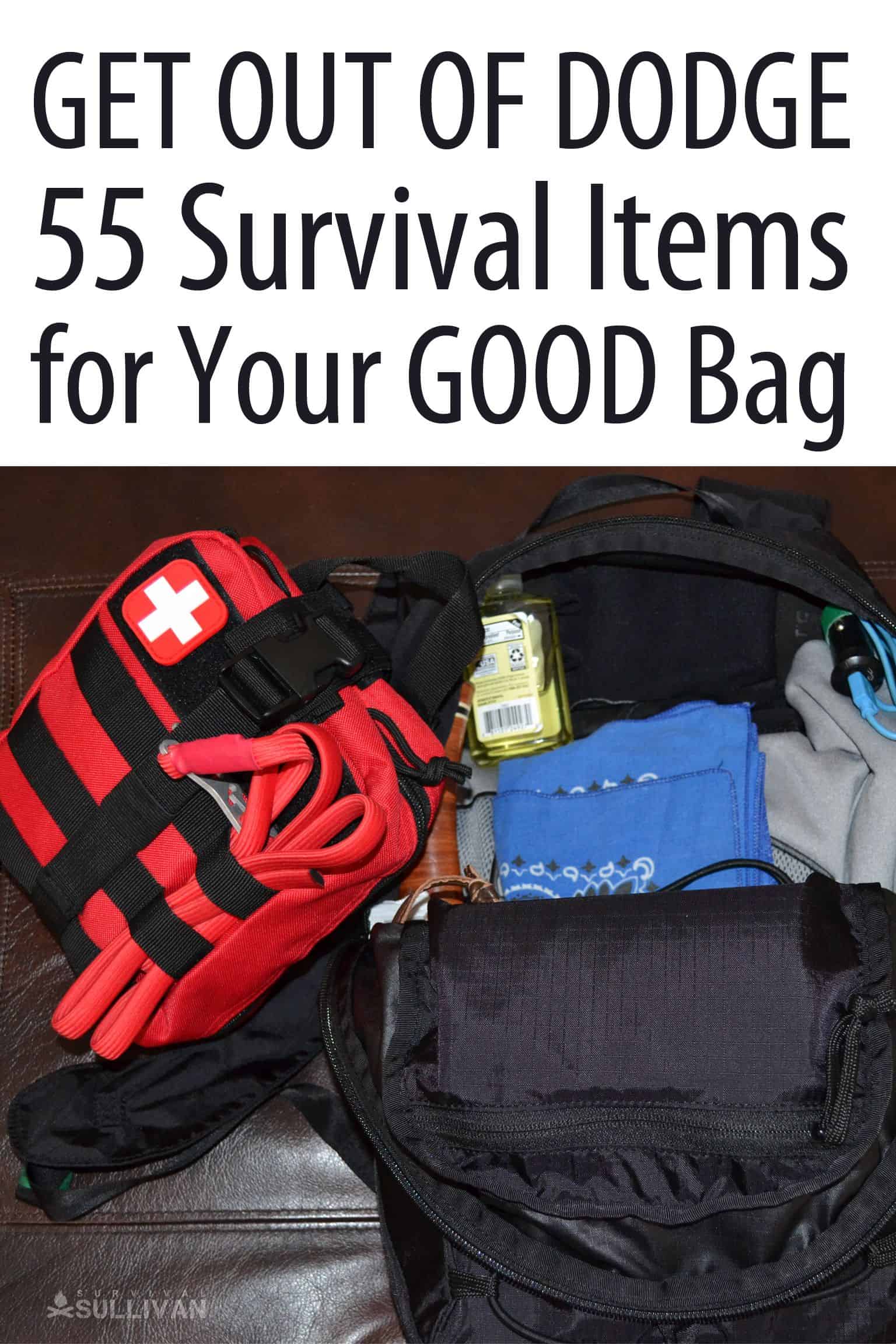
The post Get Out of Dodge: 55 Survival Items for Your GOOD Bag appeared first on Survival Sullivan.
